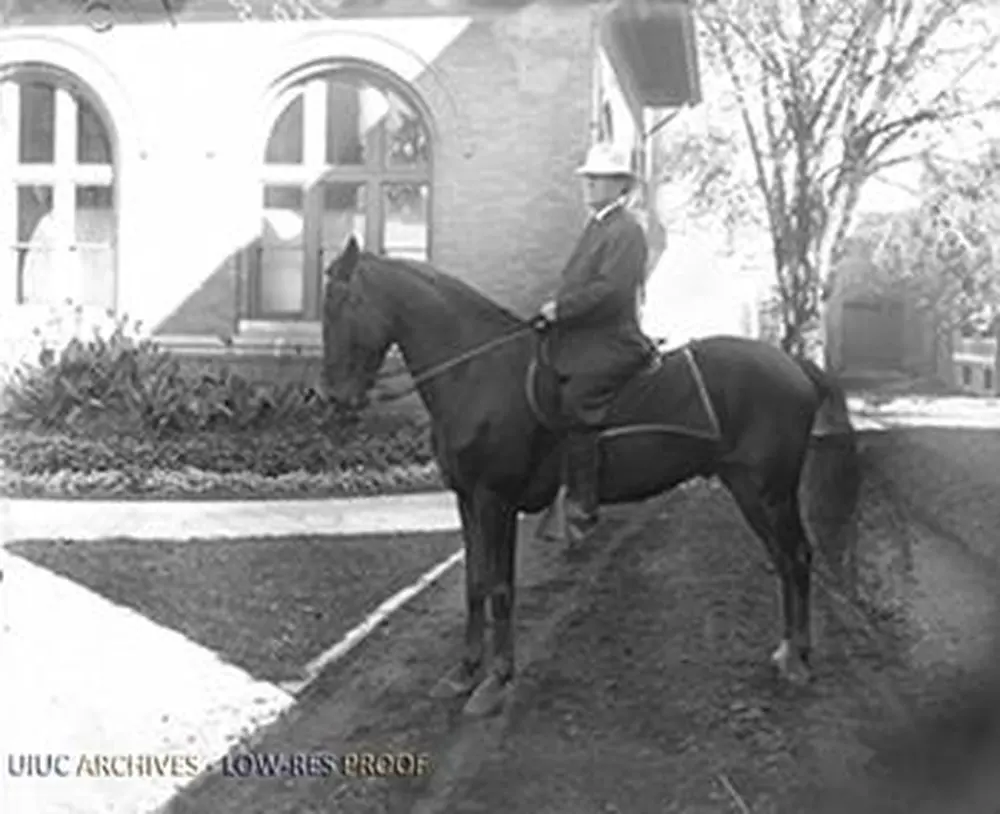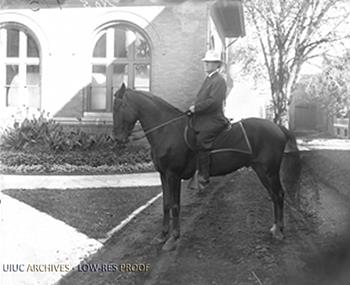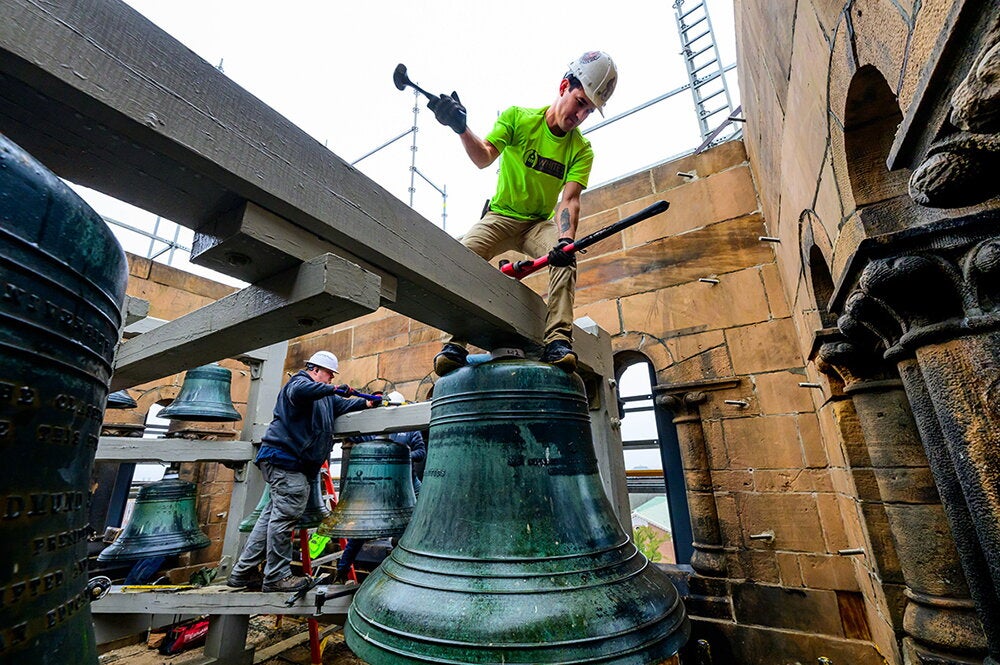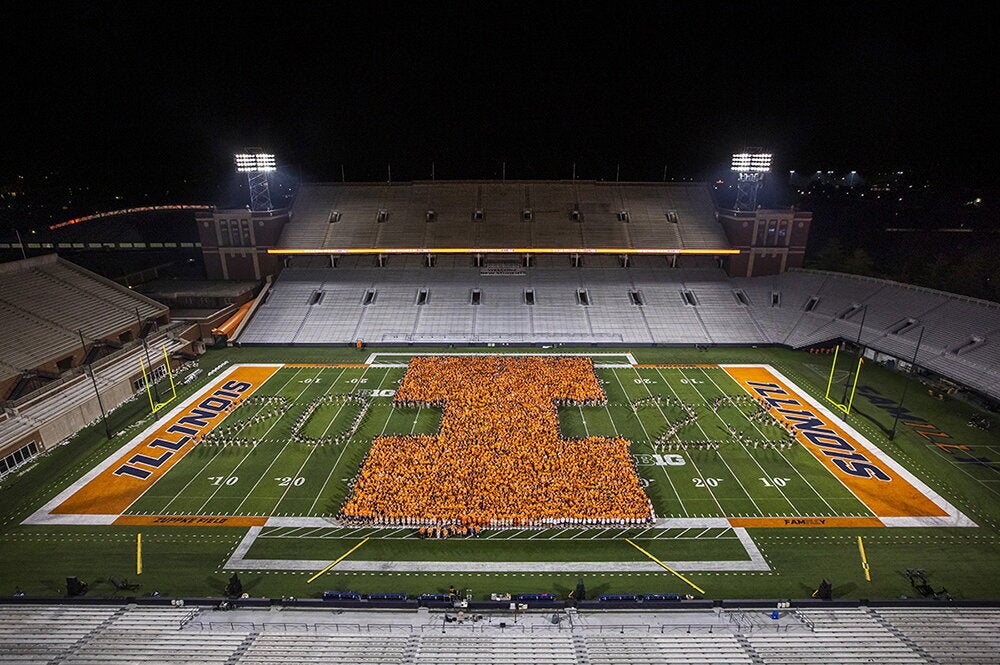

After a century of togetherness, it’s hard to imagine a time when the liberal arts and sciences weren’t mentioned in the same breath at the University of Illinois. Prior to 1913, however, when the College of Science merged with the College of Literature and Arts to form the College of Liberal Arts and Sciences, a happy marriage between the two did not seem likely.
Indeed, marriage was the analogy used in 1912 by an exasperated Arthur Daniels, acting dean of Literature and Arts, in a letter to E.J. Townsend, dean of Science, where faculty were uncertain over the implications of a union with their counterparts across the Quad.
“Of course I realize that there are many problems which will be consequent upon the decision to unite,” wrote Daniels. “The course of proceedings reminds one of being married. The first thing to be decided by the individuals is whether they want to be married or not. I fear there would be very few marriages if the subsequent problems were raised and discussed before the first step had been taken.”
The exchange was just one of many debates that occurred for years before 1913. A prevailing question on campus was whether the sciences—which then included, in part, physiology, zoology, geology, chemistry, mathematics, botany, bacteriology, and astronomy—should combine with the liberal arts, which included art and design, economics, English, French, German, Greek, history, Italian and Spanish, Latin, pedagogy, philosophy, political science, psychology, and rhetoric, among others.
The question was the subject of heated discussion by some of the most influential names in U of I history—some of whom have buildings and prestigious programs named after them—such as David Kinley, Thomas Burrill, and Edmund James, who served from 1904-1920 and is considered one of the University’s most visionary presidents.
“Among the first matters brought to my attention after I became president of the University,” wrote James, was “whether the question of administrative organization, involving a College of Science and a College of Literature and Arts as separate administrative entities, served the best interests of the University.”
Some thought that uniting the liberal arts and sciences might be more cost effective, and also that a larger college might draw more consideration during budget time. Some of the strongest voices in favor of union, however, were those of students, who complained that a division between liberal arts and sciences created too many administrative hurdles between disciplines that were increasingly overlapping.
For example, the College of Science offered a bachelor of arts degree that required 16 hours of foreign language courses, which were housed in the College of Literature and Arts. Meanwhile, Literature and Arts had a stated goal of offering an education in the sciences as well as human culture. Both strived to offer an education in culture and fundamental principles as opposed to merely their practical applications.
“We have thus substantially two competing colleges in the same University,” read one memorandum that emerged in favor of the union during committee debates prior to 1913.
It wasn’t always this way. In 1871, the liberal arts and sciences were originally grouped in the College of Literature and Science. That was during the time of John Gregory, the University’s first president and a champion of “liberal education,” who felt it was as important to prepare students for the “general duties” of life, including writing and teaching, as it was to teach them practical skills.
The College of Literature and Science remained intact until 1891, when, during a change in administration, the University took under consideration the opinion by those who felt that a “humanistic” education was inhibiting science. They succeeded in breaking the college into two, called the College of Science and College of Literature, according to The University of Illinois 1867-1894, by Winton Solberg.
The debate raged on, and in 1906 Edmund James asked faculty in both colleges for their opinions on a possible union. Faculty in the College of Literature and Arts were unanimously in favor of the union, but those in science were evenly split, and the issue was set aside.
The situation was virtually the same in 1912 when James brought up the proposal a second time. Faculty in Literature and Arts were unanimously in favor, but faculty in Science, after three heated meetings on the issue in the Natural History Building, remained split, with 16 for the union and 17 against. This time, however, the ball did not stop rolling.
Unswayed by the doubters in Science, James brought the issue before the University Senate—consisting of professors and deans from around the University—in June 1912. The Senate voted unanimously for the union, and it sent the matter to the Board of Trustees. On July 5, 1912, the board gave James the authority to form the College of LAS.
The new college launched officially in summer 1913, with Kendric Charles Babcock assigned as the first dean at a salary of $5,000. The college navigated a series of complications as it came to speed, but it was quickly clear that the College of LAS was an exciting new place.
By 1920, for example, the number of faculty in the liberal arts and sciences had grown to 324, up from just 73 in 1904, according to Sixteen Years at the University of Illinois, a study of the James administration. And the number of students in the liberal arts and sciences almost doubled in the seven years following the union, to 2,547. Those numbers include the faculty and students that were lost to the College of Commerce and Business Administration, which broke off from LAS in 1915.
“The requirements for admission and for a degree in the two colleges differed considerably and the reorganization of curriculum procedure has been a slow and sometimes difficult process,” reported Sixteen Years at the University of Illinois, “but at the end of seven years, the complete unification of the college has been accomplished.”
Today, with some 600 faculty, nearly 14,000 students, and more than 60 departments and academic units in the College of LAS, with numerous examples of collaboration across fields in research and education, it’s fair to say that the union of liberal arts and sciences has made both disciplines stronger.


